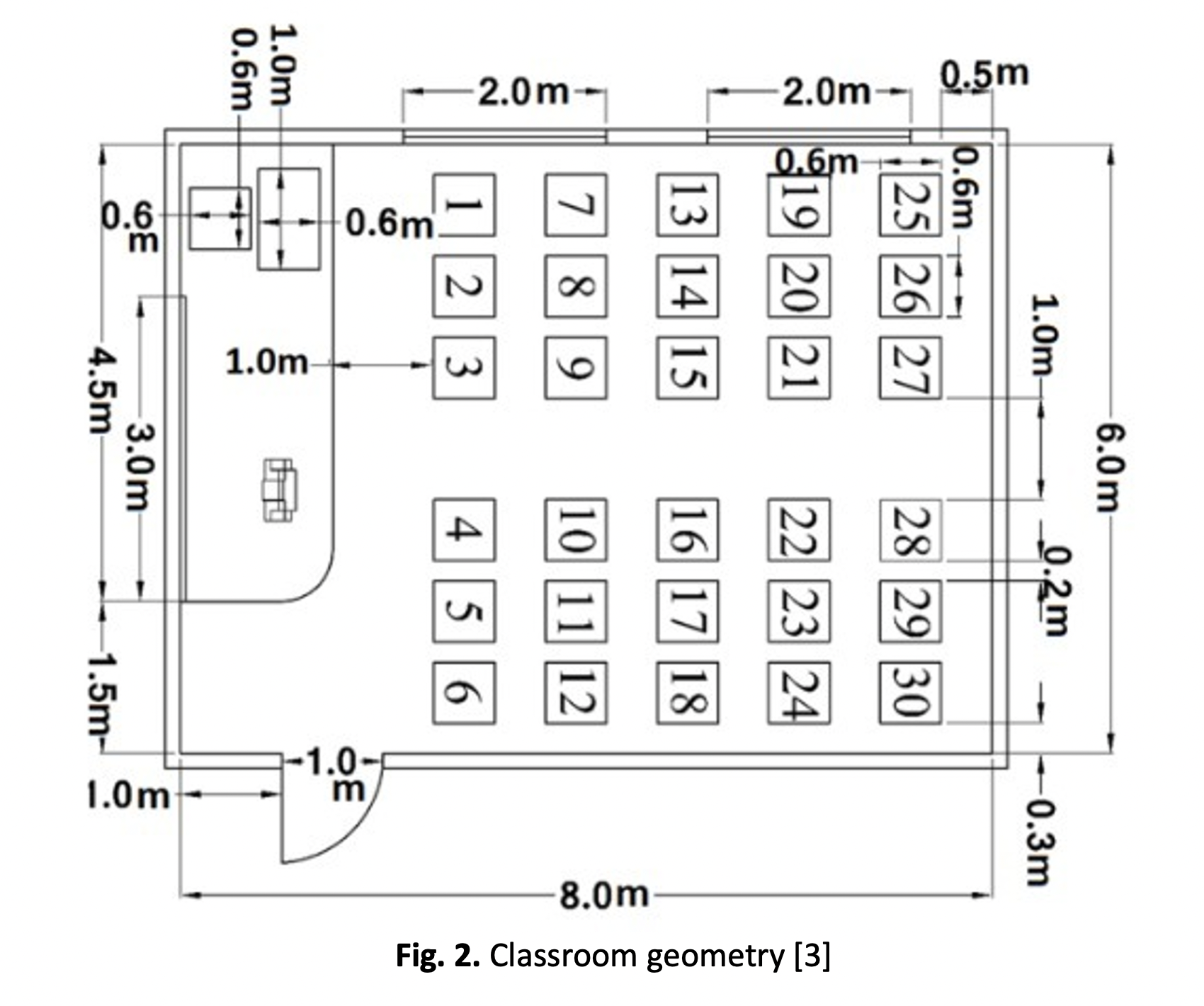Air Quality Improvement in COVID-19 Pandemic: Numerical Study of ventilation system in a classroom
DOI:
https://doi.org/10.37934/cfdl.15.1.2638Keywords:
Air Quality, HVAC, COVID-19, Computational Fluid Dynamics, IAQAbstract
Air quality plays a significant role during the coronavirus pandemic. Air acts as a spreading media as well as a control measure for infection in polluted spaces. Insufficient ventilation around the building may lead to a rise of pollutants carrying the virus. One way to improve ventilation is by increasing the air change rate. This study investigates the air change rate effectiveness in reducing droplets spreading in a classroom. Cases with various layouts of inlet and outlet vents are considered, and the spread of droplets is studied. The airflow analysis shows the impact of the different ventilation layout configurations. The results show that the CFD model simulation indicates an optimum ventilation configuration to decrease the droplet spread. The discrete phase model results also determine the trajectory of droplets spread along the classroom. CFD results show that in the selected configuration, a significant number of droplets are expelled to the outside and reduce their concentration inside the classroom.Downloads
Download data is not yet available.



























